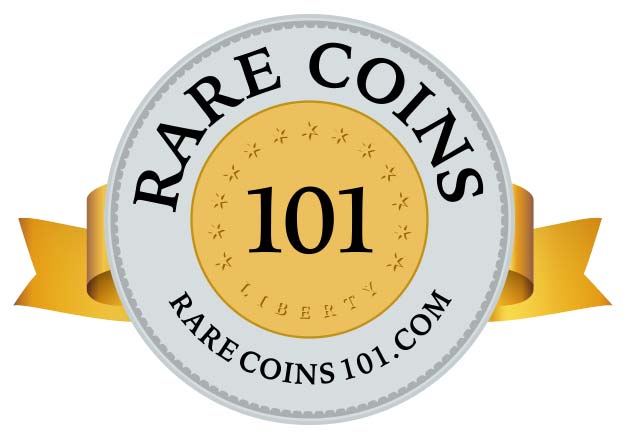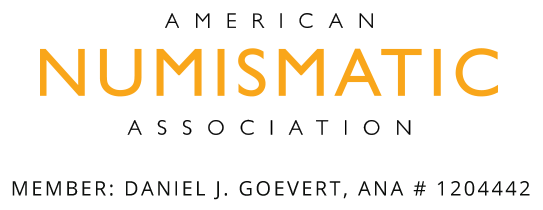1863 Seated Liberty Dollar
Introduced in 1840, the Seated Liberty silver dollar was frequently used for international trade, especially in Europe and China, where gold and silver were favored over paper currency.(1)
In essence, the Seated Liberty dollar was the predecessor of the Trade dollar, which wasn’t issued until 1873.
With the onset of the Civil War, confidence in paper currency diminished further. Due to the suspension in December 1861 of specie payments (the exchange of paper currency for gold and silver) from the government and banks, the limited number of silver dollars minted during this period were primarily utilized by bullion depositors seeking to facilitate international transactions.
Under these circumstances, only 27,200 silver dollars were struck in 1863, all at the Philadelphia Mint.
A small quantity of Seated dollars was repatriated to the United States from Europe as payment for cotton shipments; however, the majority of those that were sent abroad were subsequently destroyed through melting because of their high silver content.(2)
Collectors quickly recognized the rarity of the 1863 Seated Liberty dollar. Proofs were more accessible to 19th-century collectors than regular-issue coins, a trend that continues today due to their higher survival rate. Mint state versions of the 1863 dollar are exceedingly difficult to find.(3)
While other silver dollar dates from the Civil War era are also considered desirable, the 1863 silver dollar has demonstrated the most significant percentage gains over the long term.
For Civil War buffs, few artifacts from that historic era speak louder than the 1863 Seated Liberty dollar. If you should happen to be the fortunate owner of this coin, hold it up closely to your ear and listen carefully, for you might just faintly hear a tune called “The Battle Hymn of the Republic.”
| Estimated survivors in all grades: 1,100 ?
The survivor estimate from PCGS represents an average of one or more experts' opinions as to how many examples survive of a particular coin in all grades. Survival estimates include coins that are raw, certified by PCGS, and certified by other grading services. Learn more at PCGS. |
| PCGS Rarity Scale: 4.9 ?
The 'PCGS CoinFacts Rarity Scale' assesses the relative rarity of all U.S. coins, based on estimated surviving examples. The scale runs from 1.0 to 10.0. The higher the number, the rarer the coin.
Learn more at PCGS. |
| Search for the 1863 Seated Liberty dollar on eBay** |
Preview of eBay selection:
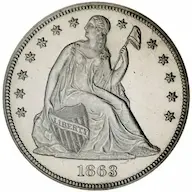 |
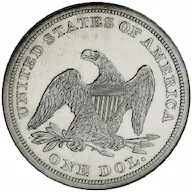 |
| Trendline Avg = 13.03 | GOOD |
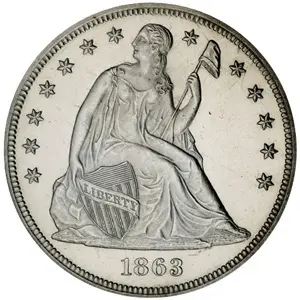 |
 |
| Trendline Avg = 13.03 | GOOD |
Historic Value Trend Charts:
| Last updated 6-9-25 | Return to Key Date Coin List | |
| Compare to Common Date Coin of Same Type | ||
|
|
||
| Download Charts to Your Computer | ||
Sources
1. Stack's Bowers Galleries. 1863 Liberty Seated Silver Dollar MS-67. Mar 2020.
2. Stack's Bowers Galleries. 1863 Liberty Seated Silver Dollar MS-64. Jun 2018.
3. Heritage Auctions. 1863 $1 MS65. Oct 2014.
**Many very fine coin dealers sell on eBay. At any point in time, there may be over one million search results for United States coins. This includes quite a few of the recommendations on our Key Date Coin List.
If you’re thinking about purchasing a rare coin, eBay is certainly worth a look. For your convenience, the links from this site to eBay are coded to bring up only coins certified by PCGS and NGC.
As is always, always the case, never buy a valuable coin from a seller whose trustworthiness cannot be verified. Learn more about this at our chapter Best Places to Buy Coins, which also has a section on doing business on eBay.
In the interest of full disclosure, Rare Coins 101 receives a small commission anytime someone connects to eBay from this site and purchases something.
Coin images by Stack's Bowers Galleries.

